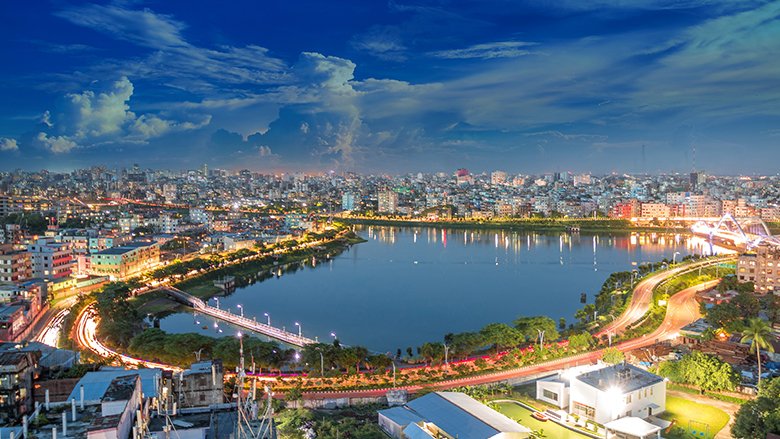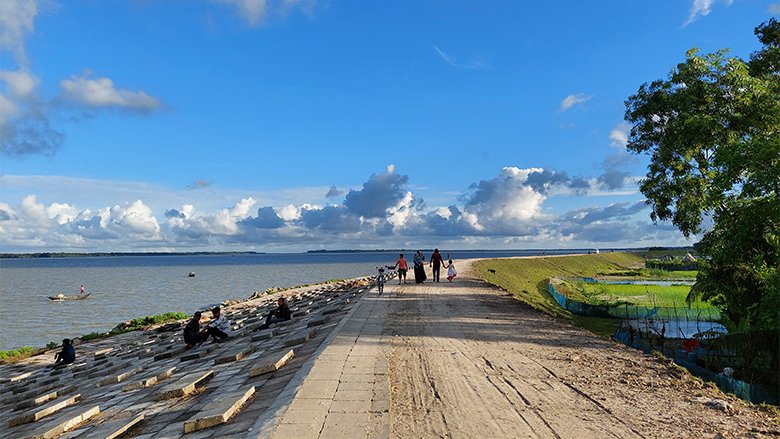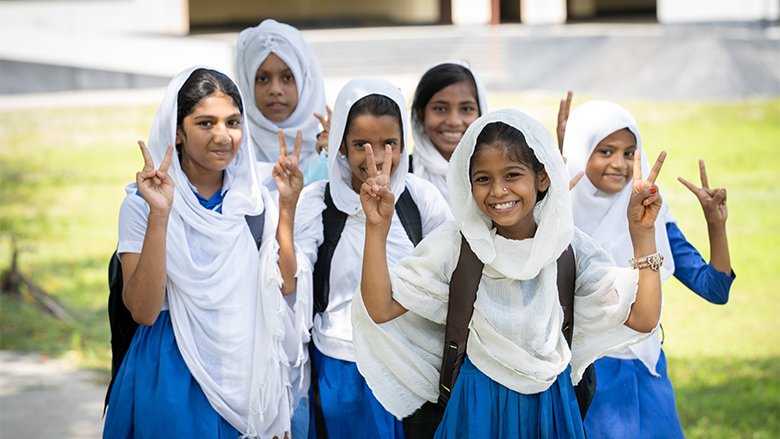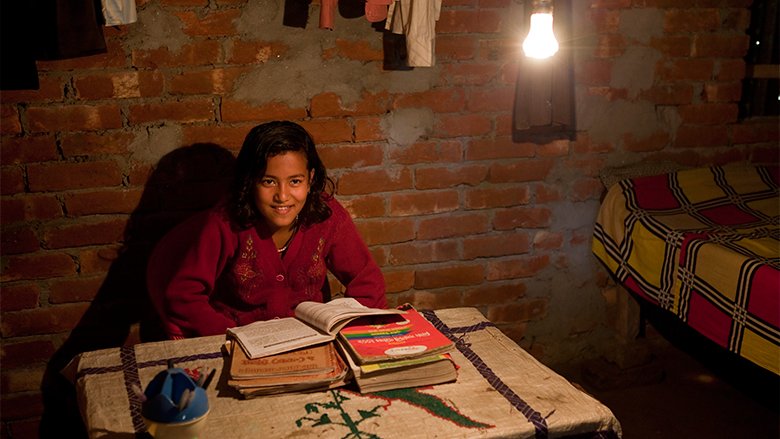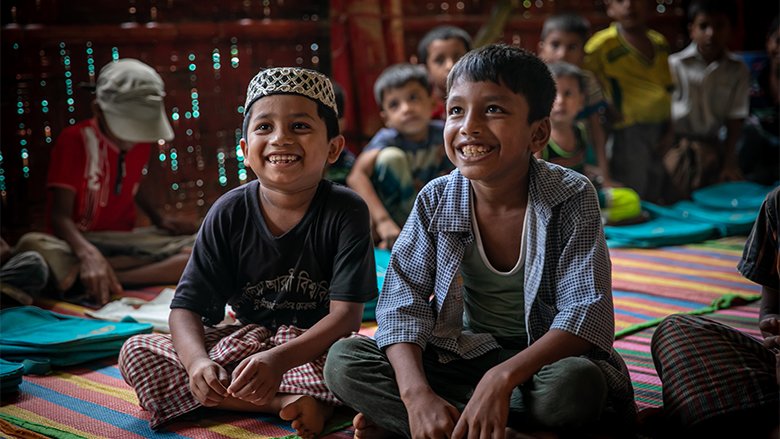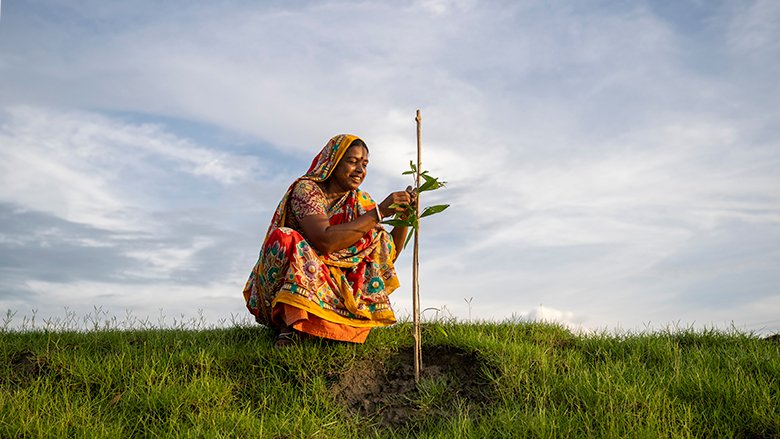KEY HIGHLIGHTS
- $40 billion in total commitments for more than 300 projects since 1972.
- 97 percent primary-school enrollment.
- Gender parity in school enrollment.
- 100 percent of the population have access to electricity.
- 32 percent increase in female labor market participation since the year 2000.
- 19 million beneficiaries of climate resilience projects.
Massive Gains, an Ambitious Development Agenda
50 years ago, at independence, Bangladesh was one of the world’s poorest nations; today, it is one of the fastest-growing economies. GDP per capita has increased more than twenty-fold from $128 in 1971 to $2,742.4 in 2022. Bangladesh reduced extreme poverty to 5.0% in 2022 from 9.0% in 2016 (based on the international poverty line of $2.15 a day), which is comparable to Latin America and the Caribbean countries and fares better than the South Asian average.
In the same period, the World Bank has supported Bangladesh in achieving its development vision. Through the International Development Association (IDA), about $40 billion has been committed in either grants or concessional financing credits to Bangladesh; with 57 active projects totaling $16.46 billion in commitments currently underway, Bangladesh has the largest IDA program globally. The World Bank has also been the largest external funder of Bangladesh, providing over a quarter of all foreign aid in a wide range of interventions across all sectors.
Bangladesh has faced multiple crises, building a strong track record of resilience. Most recently, while the country made a rapid recovery from the COVID-19 pandemic, supported by prudent macroeconomic policies, Bangladesh’s economy has been facing rising inflationary pressure, energy shortages, a balance-of-payments deficit, and a revenue shortfall, in an emerging global economic environment characterized by uncertainty, conflict, and rising climate change impacts. As a low-lying tropical country with an extensive coastline and a vast river system, Bangladesh is highly vulnerable to climate shocks and natural disasters which pose threats to infrastructure, agriculture, and livelihoods. All these complex and interrelated challenges need to be carefully navigated and priority reforms designed and implemented to reinvigorate and sustain economic growth under conditions of changing realities.
A Comprehensive Cross-Sectoral Country Strategy
The Country Partnership Framework (CPF) for FY 23-27, anchored in the government’s eighth Five Year Plan and the Long-Term Perspective Plan 2021–2041, supports Bangladesh’s goal of achieving upper-middle-income country status by 2031, by helping the country to address key barriers to higher and sustainable growth. It will help develop a diversified and competitive private sector to create more and better jobs; promote socioeconomic inclusion to expand opportunities for all; and address climate and environmental vulnerabilities. These three outcomes are key priorities for Bangladesh’s growth aspirations.
Complementing and informing the CPF, the World Bank’s Country Climate and Development Report (2022) identifies near-term policy and investment priorities that will support Bangladesh to continue progress in building resilience to the effects of climate change, based on three priority areas: (i) People-centric, climate-smart spatial development, (ii) Delivering development benefits with decarbonization, and (iii) creating a conducive Enabling environment and institutional realignment.
Transformation Across Key Sectors
The long-running partnership between the Government of Bangladesh and the World Bank has achieved notable progress in three key areas. In the first area, empowering women, Bank financing helped Bangladesh achieve gender parity in secondary school with girls now accounting for more than half of secondary school enrollment up from 17 percent in 1970. Girls’ enrollment in secondary education increased to 6.9 million. An ongoing IDA program is currently providing stipends for 4.5 million poor students in secondary schools (1.8 million boys and 2.7 million girls) allowing them to continue their education despite their families’ economic hardships.
Education gains have translated into more and better jobs, and Bangladesh has greatly expanded economic opportunities for women over the last several decades. Female labor force participation has increased from 36 to 43 percent over the last six years, and women’s financial inclusion has improved, with their mobile money accounts rising from 2 to 20 percent between 2014 and 2021. An ongoing project is helping 750,000 entrepreneurs - more than 90 percent of them women - access technical and leadership skills, technology, and finance. With IDA support, women are breaking into male-dominated sectors, like information technology.
In the second area, investing in critical infrastructure and access to electricity, the World Bank’s ongoing support to the energy sector currently amounts to $2 billion. This includes investments in enhancing capacity, generating clean energy, improving efficiency in electricity generation and transmission, and improving the quality of rural distribution networks. It also includes a current commitment of $524 million to help scale up the use of renewable energy. Access to electricity has become universal in the country. IDA support has so far added 2,675 MW of capacity to the national grid, and 135 MW through renewable sources, including home systems, solar irrigation pumps, solar mini-grids, and gridtied rooftop solar.
Powering Rural Areas In rural Bangladesh, lack of access to electricity used to limit most activities to daylight hours, and frequent power outages led to loss of economic productivity, reduced study time for children, and poor safety for women and girls. The World Bank helped provide electricity to remote and rural areas, where grid electricity could not easily reach, through a public-private partnership program with Bangladesh’s Infrastructure Development Company Limited (IDCOL), 4.2 million solar home systems have been installed in rural households and on remote shoals and islands, providing access to electricity to 12 percent of the population who previously used kerosene lamps for lighting purposes. The off-grid program also supported one of the largest clean cooking programs in the world aiming to disseminate 5 million Improved Cookstoves (ICS). The program is estimated to save 23 million ton of biomass and reduce GHG emissions by 13.36 MtCO2eq in lifetime. In Bangladesh - there are over 107,000 deaths annually because of Indoor Air Pollution, the prime cause being traditional biomass stoves. Using ICS ensures significant health benefits for women and children, and also provides a more convenient cooking solution. ICS being more efficient, lower firewood consumption by over 68 percent compared to traditional stoves and reduces pollution significantly (PM 2.5 over 20 percent and CO over 90 percent). ICS also results in significant savings in the cost of fuel and time to collect firewood. One beneficiary of the project is Shurjo Begum, who is now able to cook safely on an energy-efficient stove. "This stove is much more convenient, there is no smoke and I can breathe easier," she says. The ongoing Second Rural Electrification and Renewable Energy Development Project has helped to install 1,000 solar irrigation pumps (SIPs) so far, which replaced costly and polluting diesel-powered pumps. The SIP program also created various economic and environmental co-benefits for the farme20rs including savings in cost and time for irrigation, increased production, and more income: SIPs installed so far are saving 12 million liters of diesel per year by replacing around 9,000 diesel pumps and reducing Greenhouse Gas emissions by 35 ktCO2/year. |
The third area of significant World Bank support for Bangladesh is building climate resilience. From 2000 to 2019, Bangladesh was ranked as the world’s seventh most climate change-affected country. With IDA finance adding up to $1.84 billion, the World Bank supported Bangladesh in building resilience against natural disasters and climate change impacts: More than 1,547 multi-purpose disaster shelters, doubling as primary schools during normal weather, and 550 km of climate-resilient roads were rehabilitated or newly constructed. These initiatives are benefiting 9 million people living along Bangladesh’s vulnerable coastline. Consecutive World Bank-financed projects have helped the country build stronger disaster-coping mechanisms which have helped to reduce cyclone-related deaths 100-fold since 1970.
In addition, the partnership also extends to addressing one of the world’s largest forced displacement - that of the Rohingya. Bangladesh has generously provided support and shelter to more than 1 million displaced Rohingya people from Myanmar. By mobilizing $590 million in grant financing (including from the Government of Canada) in five projects, the World Bank has been helping Bangladesh to support both the displaced Rohingya population – until their safe and voluntary return to Myanmar – and the host communities in Cox’s Bazar. Investments cover sanitation and health needs, small infrastructure, the procurement of emergency equipment, and informal education in the Rohingya camps inter alia.
